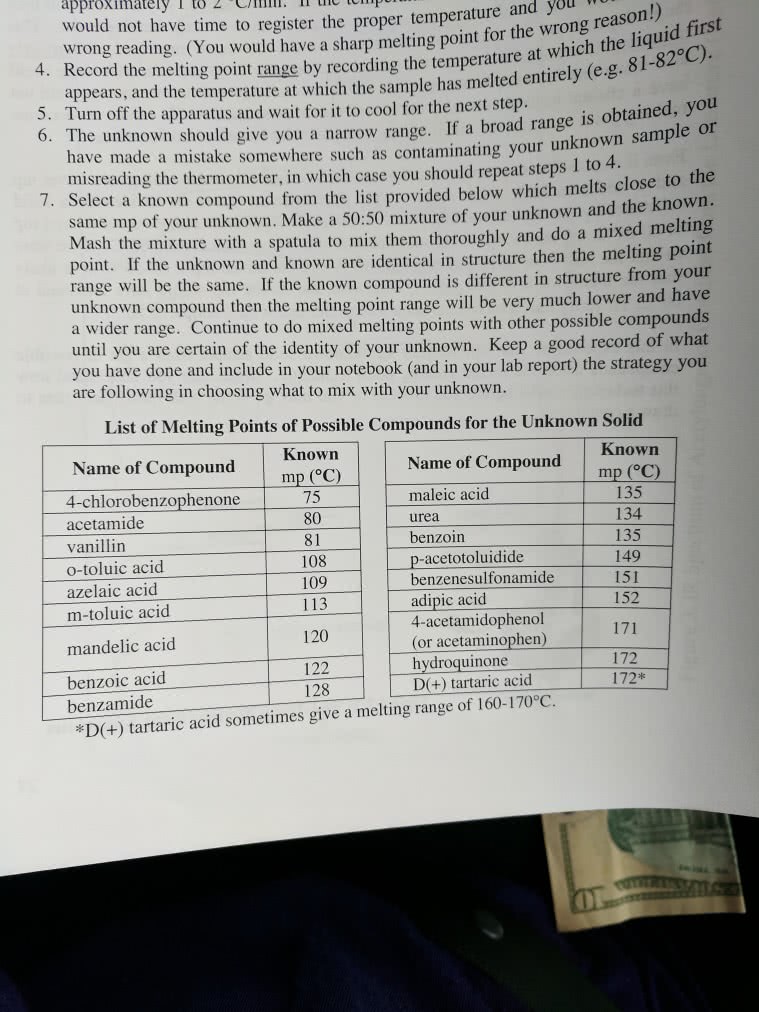CHEM 2513 Lecture Notes - Lecture 15: Thrice, Filter Paper, Sodium Sulfate
Document Summary
The melting point of a solid is a physical property that can be used to identify and characterise the purity of a given compound. A pure, solid compound will always melt over a narrow temperature range. If an impurity is present, the solid will melt over a much lower and broader range of temperatures. A melting point is always recorded as a range starting from the first droplets formed to the point where no solid is left. It is important to calibrate your thermometer/setup ti ensure the measurements are accurate based on the thermometer setup. Pack about 2mm into a capillary tube by tapping it on the bench top and dropping it into the long glass tubing thrice: run 3 capillary tubes at a time. Set the dial to 3 or 30 depending on the model. Increase the dial if needed: record melting point ranges. This extraction done on the basis of differences in solubilities between compounds.


